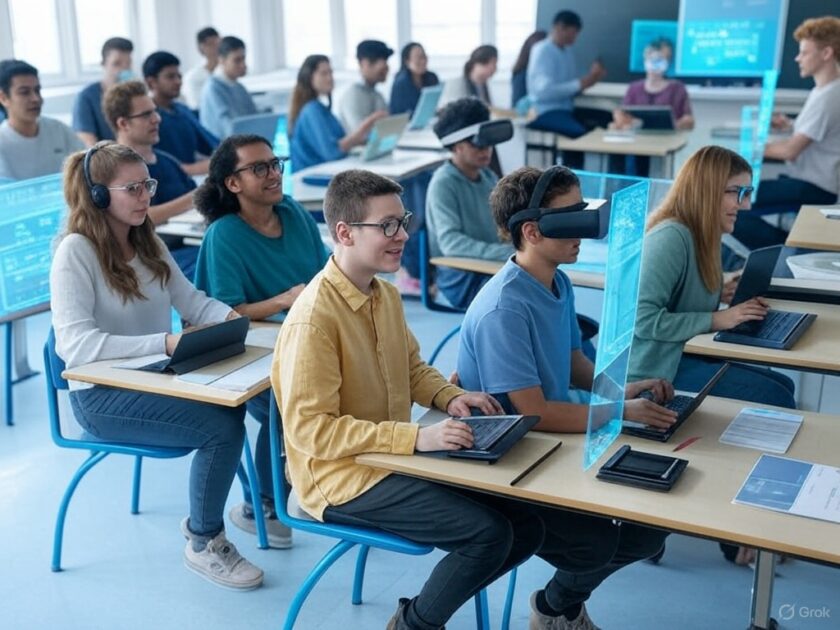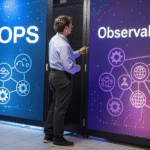AI-Powered Virtual Learning for Every Student

AI-powered virtual learning is changing education. It makes learning easy, accessible, and fun. Students can study at their own pace, get instant feedback, and improve with AI tools. This article explains the benefits of AI virtual learning, its impact, and common questions.

AI-Powered Virtual Learning for Every Student
Education is evolving fast. AI-powered virtual learning makes it available for everyone. Students from all backgrounds can enjoy personalized lessons, quick feedback, and interactive learning. This technology ensures no student is left behind.
Benefits of AI Virtual Learning
1. Personalized Learning
AI adjusts lessons to fit each student’s needs. This helps learners study in a way that suits them best. Students can focus more on difficult topics while moving quickly through subjects they understand. This method makes learning faster and more effective. AI can also recommend extra resources, such as videos, exercises, and quizzes, based on each student’s learning style.
2. Learn Anytime, Anywhere
AI-powered platforms give students the freedom to learn whenever and wherever they want. Whether at home, in a library, or on the go, students can access lessons through their computers, tablets, or smartphones. This flexibility is great for those balancing studies with work, family, or other responsibilities. Even students in remote areas can access high-quality education without the need to travel.
3. Instant Feedback & Assessments
AI quickly checks answers and gives feedback. This helps students correct mistakes and improve fast. Instead of waiting for teachers to grade assignments, students can see their errors immediately and work on improving their knowledge. AI also tracks progress over time, helping students identify their strengths and areas for improvement.
4. Fun & Engaging Lessons
AI makes learning exciting with quizzes, videos, and interactive activities. Games and challenges help students stay motivated. AI can even suggest topics based on interests, making learning enjoyable instead of feeling like a chore. Virtual simulations and AI-driven storytelling can bring subjects to life, helping students connect with the material on a deeper level.
5. Affordable Education
Many AI learning tools are free or low-cost, making quality education available to all. Traditional education can be expensive, but AI reduces costs by providing free learning materials, practice tests, and digital textbooks. Online courses with AI-powered tutors can offer the same level of learning as traditional classrooms at a fraction of the cost.
6. Teacher Support
AI helps teachers track student progress and customize lessons for better learning. Teachers can see which students need extra help and adjust their teaching strategies. AI can also automate grading, saving teachers time so they can focus more on teaching. AI-powered tools can generate lesson plans, suggest assignments, and even help with curriculum design.
7. Helps All Students
AI tools support students with disabilities by offering text-to-speech, language translation, and voice recognition. This makes learning easier for students with hearing, vision, or speech difficulties. AI ensures that education is accessible to everyone, regardless of their challenges. For example, AI-powered subtitles and sign language interpretation can assist hearing-impaired students.
8. Better Time Management
AI-powered platforms help students create study plans, set goals, and stay organized. These tools send reminders about deadlines, suggest study schedules, and track progress, helping students develop good learning habits. AI can analyze a student’s study patterns and recommend the best times to review materials for maximum retention.
9. Encourages Independent Learning
With AI, students can take control of their learning journey. They don’t have to rely only on teachers or textbooks. AI provides resources, explanations, and exercises that allow students to explore subjects deeply and develop critical thinking skills. Self-paced learning builds confidence and encourages curiosity.
10. Real-Life Applications
AI connects learning with real-world situations. It helps students see how math, science, and other subjects apply to everyday life. AI-powered simulations and virtual labs allow students to experiment and learn through hands-on experiences. For example, AI can create virtual science experiments, coding exercises, or even business simulations that teach students practical skills for the future.
11. Supports Multiple Languages
AI-powered learning platforms can translate lessons into different languages, helping students from different backgrounds learn without language barriers. AI-powered speech recognition and translation tools allow students to study in their native language and gradually improve their understanding of other languages.
12. Builds Confidence in Students
AI-powered tutoring provides students with a stress-free learning/free online ai learning course environment. Unlike traditional classrooms, where students may feel embarrassed to ask questions, AI offers private, one-on-one learning experiences. This helps students gain confidence in their abilities and ask more questions without fear of judgment.
13. Helps in Career Development
AI learning platforms offer courses on career-related skills such as coding, graphic design, business management, and marketing. Students can earn certifications and gain practical knowledge that prepares them for future jobs. AI-powered career guidance tools can even suggest courses and career paths based on a student’s strengths and interests.
14. Reduces Learning Gaps
AI identifies weak areas in a student’s learning and provides extra practice to fill gaps in knowledge. This is especially useful for students who struggle in certain subjects, helping them catch up and stay on track. AI can even offer personalized learning strategies to address specific challenges.
Here is some free AI courses related to AI-powered virtual learning, online education, and digital learning:
1. AI in Education
📌 Course: AI for Education by Google
🔹 Platform: Google AI
🔹 What You’ll Learn: Basics of AI in education, AI tools for teachers, and how AI can personalize learning.
2. Introduction to Artificial Intelligence
📌 Course: Elements of AI
🔹 Platform: University of Helsinki
🔹 What You’ll Learn: Basics of AI, machine learning, and how AI is used in education and other fields.
3. AI for Everyone
📌 Course: AI for Everyone by Andrew Ng
🔹 Platform: Coursera (Free with audit)
🔹 What You’ll Learn: How AI is shaping industries, including education, and how non-technical people can use AI.
4. Machine Learning for Beginners
📌 Course: Microsoft’s Machine Learning for Beginners
🔹 Platform: Microsoft (GitHub)
🔹 What You’ll Learn: Basics of machine learning, AI-powered tools, and how AI models work in online education.
5. AI-Powered Chatbots for Education
📌 Course: Build Chatbots with AI
🔹 Platform: Udacity
🔹 What You’ll Learn: How AI chatbots help in virtual learning, personalized learning assistants, and NLP basics.
United States:
- Coursera
Coursera partners with top universities and organizations to offer courses, specializations, and degrees across various subjects. - Udemy
Udemy is a vast marketplace with over 250,000 courses, allowing learners to acquire new skills at their own pace. - K12
K12 provides online schooling programs for students from kindergarten through 12th grade, combining flexibility with quality education. - Skillshare
Skillshare offers a variety of online courses in areas like creative writing, painting, and animation.
Australia:
- TAFE Digital
TAFE Digital offers a wide range of nationally recognized online courses, allowing students to study at their own pace and convenience. - Preschool
Preschool conducts live lessons and webinars, providing interactive online learning experiences for students. - LearnON by Jacaranda
LearnON is an online learning platform that brings trusted Jacaranda content to life, offering interactive educational resources. - OpenLearning
OpenLearning is an online learning platform that offers courses from various Australian institutions, focusing on community-based interactive learning.

Pros & Cons of AI Virtual Learning
- Personalized learning plans
- Flexible study times
- Quick feedback
- Affordable learning options
- Increases student interest
- Helps teachers improve lessons
- Supports students with disabilities
- Encourages self-learning
- Offers real-world applications
- Needs internet access
- Less face-to-face interaction
- Some students may struggle to stay focused
- Privacy concerns
- May not fully replace traditional learning methods
Frequently Asked Questions (FAQs)
1. What is AI Virtual Learning?
AI virtual learning uses artificial intelligence to create smart, interactive lessons for students.
2. How does AI help students?
AI gives personalized lessons, tracks progress, offers 24/7 learning and provides instant feedback.
3. Is AI learning expensive?
Not always. Many AI learning tools are free or low-cost, making education easier to access.
4. Can AI replace teachers?
No. AI supports teachers by automating tasks and personalizing lessons, but teachers are still essential.
5. Can AI teach all subjects?
Yes. AI can assist in many subjects, including math, science, languages, and coding.
6. Is AI learning safe?
Most platforms are safe, but parents and students should check for strong privacy settings.
7. What are the best AI learning platforms?
Some top platforms include Khan Academy, Coursera, Udemy, Duolingo, and Google Classroom.
8. How does AI help students with disabilities?
AI provides speech-to-text, language translation, and other tools to help students with different needs.
9. Can AI help with exam preparation?
Yes. AI offers personalized study plans, practice tests, and instant feedback for better exam results.
10. Will AI replace traditional schools?
No. AI will improve education but cannot replace in-person learning completely.
Conclusion
AI-powered virtual learning is making education easier and more accessible. It offers flexible, personalized, and affordable learning opportunities for students everywhere. While there are some challenges, the benefits are greater. Start using AI virtual learning today and improve your education!



